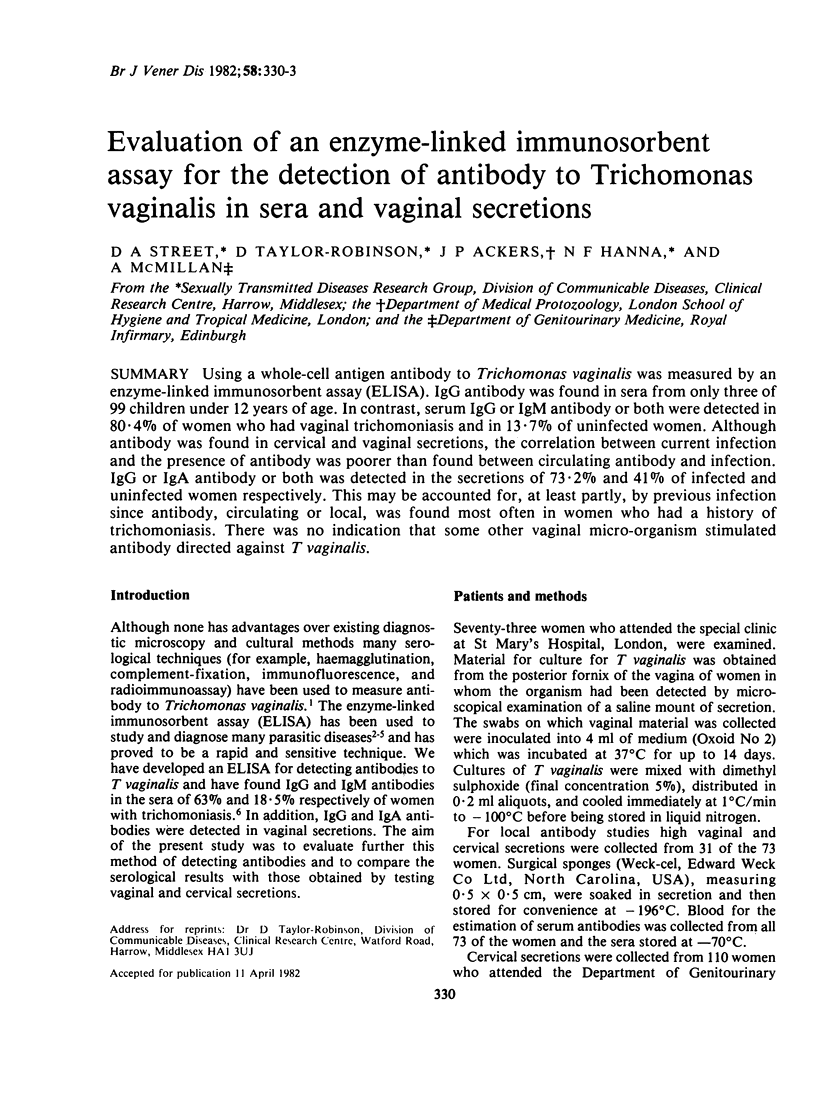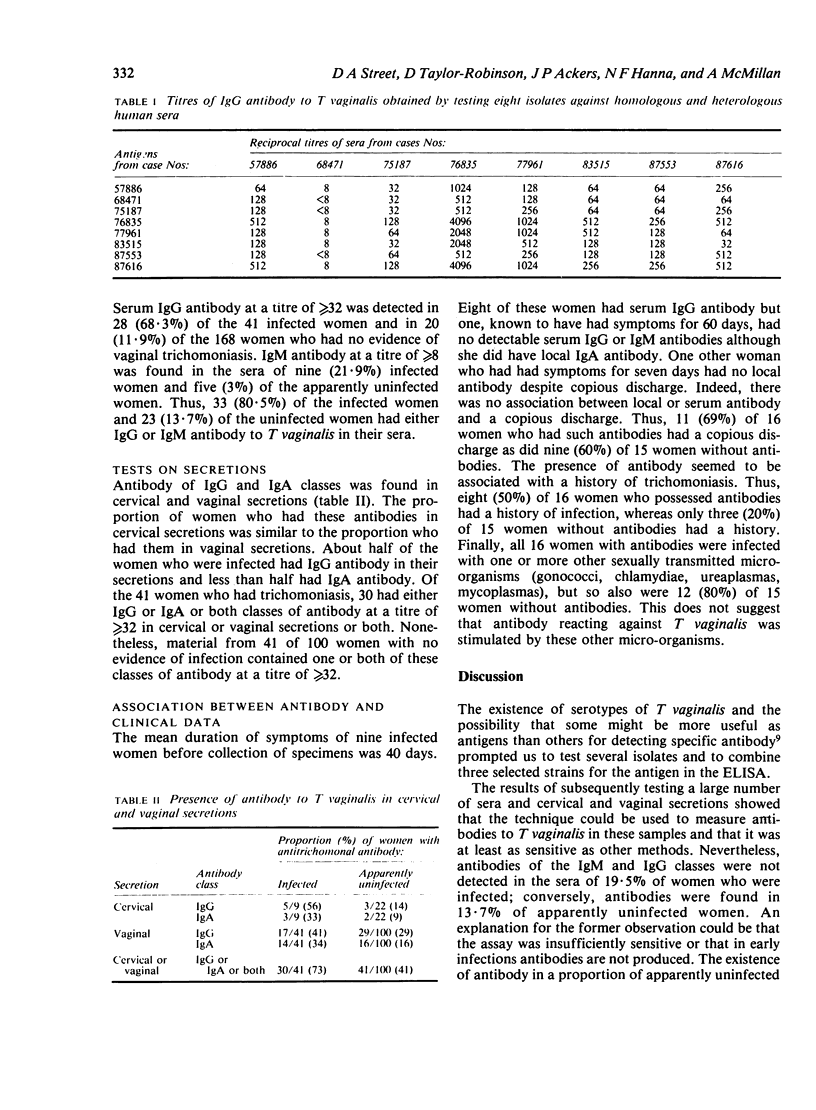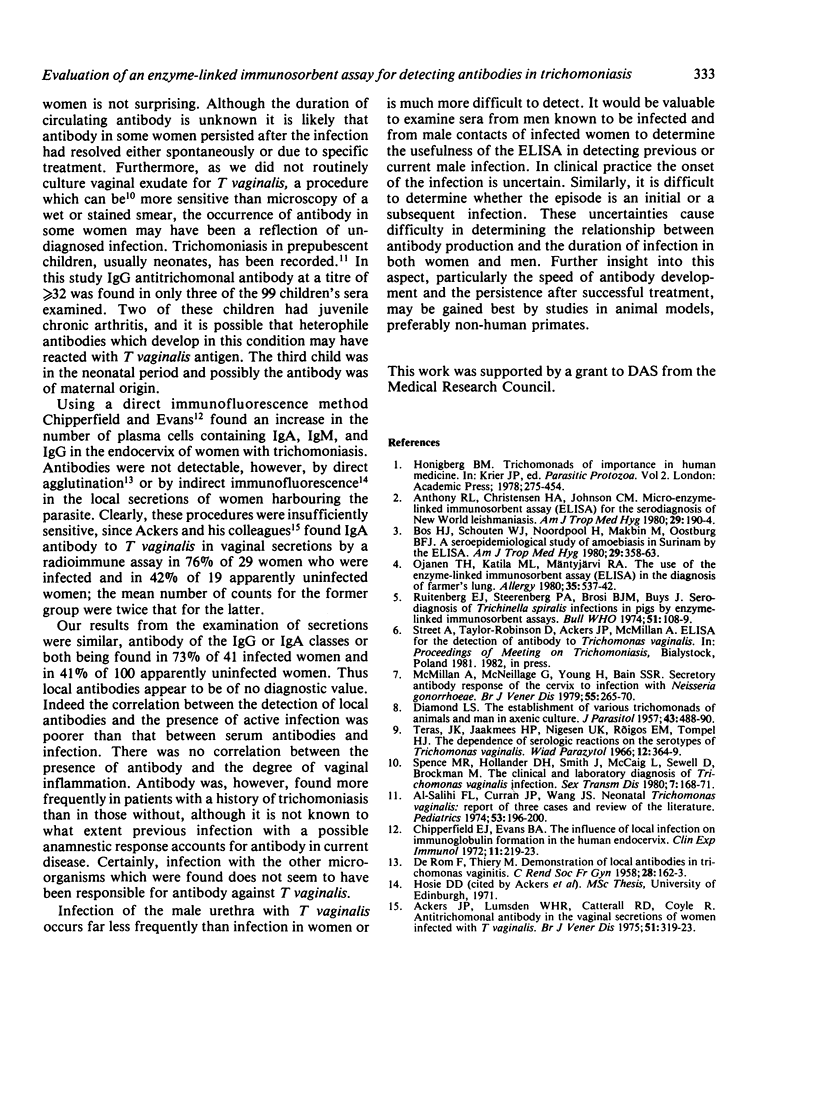Abstract
Using a whole-cell antigen antibody to Trichomonas vaginalis was measured by an enzyme-linked immunosorbent assay (ELISA). IgG antibody was found in sera from only three of 99 children under 12 years of age. In contrast, serum IgG or IgM antibody or both were detected in 80.4% of women who had vaginal trichomoniasis and in 13.7% of uninfected women. Although antibody was found in cervical and vaginal secretions, the correlation between current infection and the presence of antibody was poorer than found between circulating antibody and infection. IgG or IgA antibody or both was detected in the secretions of 73.2% and 41% of infected and uninfected women respectively. This may be accounted for, at least partly, by previous infections since antibody, circulating or local, was found most often in women who had a history of trichomoniasis. There was no indication that some other vaginal micro-organism stimulated antibody directed against T vaginalis.
Full text
PDF



Selected References
These references are in PubMed. This may not be the complete list of references from this article.
- Ackers J. P., Lumsden W. H., Catterall R. D., Coyle R. Antitrichomonal antibody in the vaginal secretions of women infected with T. vaginalis. Br J Vener Dis. 1975 Oct;51(5):319–323. doi: 10.1136/sti.51.5.319. [DOI] [PMC free article] [PubMed] [Google Scholar]
- Anthony R. L., Christensen H. A., Johnson C. M. Micro enzyme-linked immunosorbent assay (ELISA) for the serodiagnosis of New World leishmaniasis. Am J Trop Med Hyg. 1980 Mar;29(2):190–194. doi: 10.4269/ajtmh.1980.29.190. [DOI] [PubMed] [Google Scholar]
- Bos H. J., Schouten W. J., Noordpool H., Makbin M., Oostburg B. F. A seroepidemiological study of amebiasis in Surinam by the enzyme-linked immunosorbent assay (ELISA). Am J Trop Med Hyg. 1980 May;29(3):358–363. doi: 10.4269/ajtmh.1980.29.358. [DOI] [PubMed] [Google Scholar]
- Chipperfield E. J., Evans B. A. The influence of local infection on immunoglobulin formation in the human endocervix. Clin Exp Immunol. 1972 Jun;11(2):219–233. [PMC free article] [PubMed] [Google Scholar]
- DE ROM F., THIERY M. Mise en évidence d'anticorps locaux dans la vaginite à trichomonas. C R Soc Fr Gyncol. 1958 Mar;28(3):162–163. [PubMed] [Google Scholar]
- DIAMOND L. S. The establishment of various trichomonads of animals and man in axenic cultures. J Parasitol. 1957 Aug;43(4):488–490. [PubMed] [Google Scholar]
- McMillan A., McNeillage G., Young H., Bain S. S. Secretory antibody response of the cervix to infection with Neisseria gonorrhoeae. Br J Vener Dis. 1979 Aug;55(4):265–270. doi: 10.1136/sti.55.4.265. [DOI] [PMC free article] [PubMed] [Google Scholar]
- Ojanen T. H., Katila M. L., Mäntyjärvi R. A. The use of enzyme-linked immunosorbent assay (ELISA) in the diagnosis of farmer's lung. Allergy. 1980 Sep;35(6):537–542. doi: 10.1111/j.1398-9995.1980.tb01801.x. [DOI] [PubMed] [Google Scholar]
- Ruitenberg E. J., Steerenberg P. A., Brosi B. J., Buys J. Serodiagnosis of Trichinella spiralis infections in pigs by enzyme-linked immunosorbent assays. Bull World Health Organ. 1974;51(1):108–109. [PMC free article] [PubMed] [Google Scholar]
- Spence M. R., Hollander D. H., Smith J., McCaig L., Sewell D., Brockman M. The clinical and laboratory diagnosis of Trichomonas vaginalis infection. Sex Transm Dis. 1980 Oct-Dec;7(4):168–171. doi: 10.1097/00007435-198010000-00004. [DOI] [PubMed] [Google Scholar]
- al-Salihi F. L., Curran J. P., Wang J. Neonatal Trichomonas vaginalis: report of three cases and review of the literature. Pediatrics. 1974 Feb;53(2):196–200. [PubMed] [Google Scholar]


